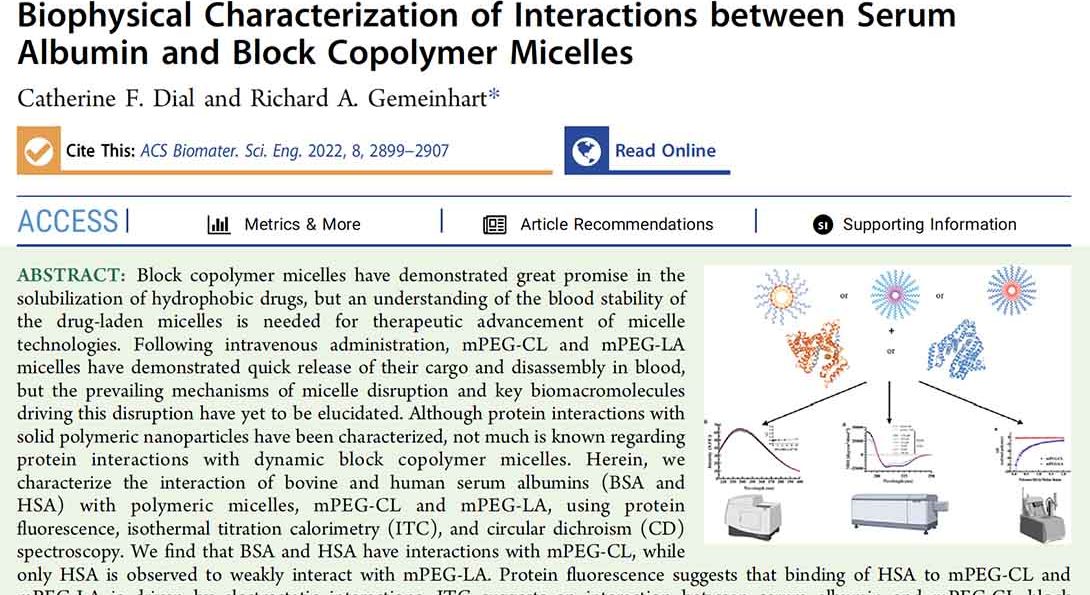Catherine’s First Authored Paper Published

Tite: Biophysical characterization of interactions between serum albumin and block copolymers micelles
ABSTRACT:
Block copolymer micelles have demonstrated great promise in the solubilization of hydrophobic drugs, but understanding of the blood stability of the drug-laden micelles is needed for therapeutic advancement of micelle technologies. Following intravenous administration, mPEG-CL and mPEG-LA micelles have demonstrated quick release their cargo and disassembly in blood, but the prevailing mechanisms of micelle disruption and key biomacromolecules driving this disruption have yet to be elucidated. Although protein interactions with solid polymeric nanoparticles have been characterized, not much is known regarding protein interactions with dynamic block copolymer micelles. Herein, we characterized the interaction of bovine and human serum albumin with polymeric micelles, mPEG-CL and mPEG-LA, using protein fluorescence, isothermal titration calorimetry, and circular dichroism spectroscopy. We found bovine and human serum albumin have interactions with mPEG-CL, while only human serum albumin was observed to weakly interact with mPEG-LA. Protein fluorescence suggest that binding of human serum albumin to mPEG-CL and mPEG-LA is driven by electrostatic interactions. Isothermal titration calorimetry suggested an interaction between serum albumin and mPEG-CL block copolymers driven by hydrogen bonding and electrostatic interactions in physiologic MOPS-buffered saline, while mPEG-LA had no measurable interaction with either serum albumin. Circular dichroism spectroscopy demonstrated that protein secondary structure was intact in both proteins in the presence of mPEG-CL and mPEG-LA. Overall, BSA was not always predictive of polymeric interactions with human serum albumin. Understanding of interactions between serum proteins and block copolymer micelles, and the exact mechanisms of destabilization will direct the rational design of block copolymer systems for improving blood stability.
KEYWORDS:
micelle, polymer, albumin, interactions, protein-polymer interactions